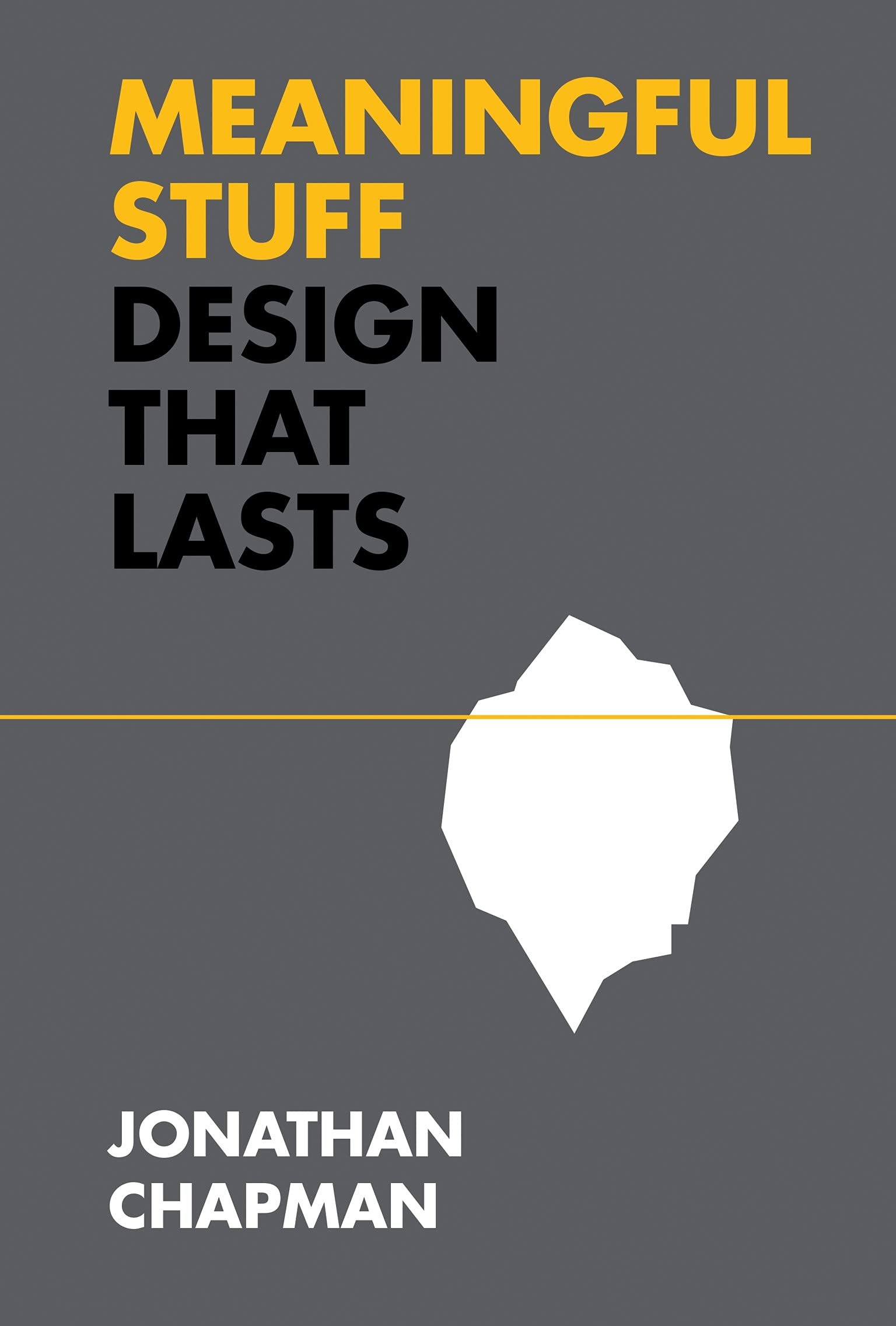Meaningful Stuff: Design That Lasts
Never have we wanted, owned, and wasted so much stuff. Our consumptive path through modern life leaves a wake of social and ecological destruction.
In Meaningful Stuff, Jonathan Chapman investigates why we throw away things that still work, and shows how we can design products, services, and systems that last.
Obsolescence is an economically driven design decision--a plan to hasten a product's functional or psychological undesirability. Many electronic devices, for example, are intentionally impossible to dismantle for repair or recycling, their brief use-career proceeding inexorably to a landfill. A sustainable design specialist who serves as a consultant to global businesses and governmental organizations, Chapman calls for the decoupling of economic activity from mindless material consumption and shows how to do it.
Chapman shares his vision for an "experience heavy, material light" design sensibility. This vital and timely new design philosophy reveals how meaning emerges from designed encounters between people and things, explores ways to increase the quality and longevity of our relationships with objects and the systems behind them, and ultimately demonstrates why design can--and must--lead the transition to a sustainable future.
Jonathan Chapman
Professor & Director of Doctoral Studies at Carnegie Mellon University’s School of Design where he leads the Ph.D. in Transition Design—a research program for designers committed to making positive change in the world.
Chapman is a consultant and strategic advisor to global businesses and governmental organizations from Puma, COS, and Philips, to the House of Lords, the United Nations, and NASA. His Op-Ed for The Guardian outlining his research agenda received 1,000+ comments within hours of going live. New Scientist described him as “a mover and shaker” and a “new breed of the sustainable design thinker.”
Credits
Designer: Jonathan Chapman
Publisher: The MIT Press
Country: United States
Photographs: ©Jonathan Chapman / ©The MIT Press



